
Introduction
At times through Church history there have been buried biblical truths that were brought back to the forefront. During the Protestant Reformation, for example, the biblical truth of Justification by Faith came front and center.
With the account we are currently writing about, the Charismatic Movement, there was the return of the gifts of the Holy Spirit within denominations that were previously opposed to such Pentecostal experiences.
Denominations that were impacted the most in this movement were those categorized with a wide assortment of labels: Mainline Protestant, Oldline Protestant, High Church, and those that have traditionally embraced modernism, liberalism, and progressivism. In general, the movement was among the Seven Sisters of American Protestantism:
► American Baptist Churches (USA)
► Christian Church (Disciples of Christ)
► The Episcopal Church
► The Evangelical Lutheran Church in America
► The Presbyterian Church (USA)
► The United Church of Christ
► The United Methodist Church
The seven denominations listed are not all that were influenced, as the Charismatic Movement or Charismatic Renewal of the 1960s and 1970s touched almost every denomination in America as well as many of the historic denominations of Western Europe.
The Charismatic Movement’s Beginning
Most historians agree that the Charismatic Movement began on Sunday morning, April 3, 1960, when Episcopal Priest Dennis J. Bennett informed his congregation, St. Mark’s Episcopal Church in Van Nuys, California, that he had received the Baptism in the Holy Spirit and spoke with tongues.

St. Mark’s Episcopal Church in Van Nuys, California
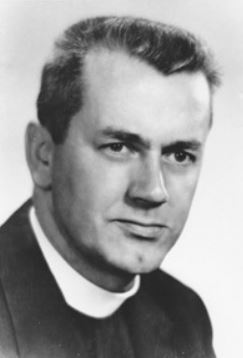
Dennis J. Bennett
Extraordinary Prayer
Frank McGuire, an Episcopalian pastor in the Los Angeles area, went to the older Dennis Bennett (almost 40 at the time) for counsel. He told Bennett of John and Joan Baker, a couple in his congregation who were in their mid-30s. He said that they had attended a Pentecostal church and had received the baptism in the Holy Spirit and spoke in tongues.
McGuire also told Bennett that that couple’s lives were transformed, and that they had become some of the most faithful, balanced, and dependable people in his church.
After some persuasion, Bennett agreed to meet McGuire at the Bakers’ small Monterrey Park home in August 1959 for a prayer meeting.
With some of Bennett’s professors in seminary being atheists, his theological studies led him to dismiss the Bible’s miracles and claims, such as:
► The virgin birth of Jesus
► Jesus being the son of God
► The need of a personal Savior
► The personality of the Holy Spirit (to Bennett He was a vague, theoretical Being)
► Life after death, etc.
Bennett said he desired a
Scientifically respectable religion that will be accepted by modern intellectuals!
At the prayer meeting at the Bakers’ home, Bennett was facing a young couple who were balanced, were sound in their faith, and truly loved Jesus. He recognized that they had something he did not.
After Bennett and his wife, Elberta, left the Bakers’ home that night, she said to him in the car on the drive home,
I don’t know what these people have, but I want it!
Crisis of Faith
Bennett had already settled in his heart that his theology was accurate, but he was beginning to have a crisis of faith. He began feeling like he was starving, while at the same time a feast was spread before him on the table, but he didn’t know if it was safe to eat or not.
After three months of attending the Bakers’ home prayer meetings and studying the topic of the baptism in the Holy Spirit on his own, it was on a Saturday afternoon prayer meeting at the Bakers’, in November 1959, when he said to them:
I want what you’ve got! How did you get it?
His question was followed with a simple prayer asking for that baptism, and the Holy Spirit engulfed him, and he began speaking in tongues.
When he arrived home later in the evening his wife was already in bed, not having accompanied him on this night. When Bennett placed his hand on the front door of their home, she said she felt a jolt of power that went through their home and it woke her up! She knew right away what it meant, and what had happened to her husband.
Bennett’s life was transformed:
► It was like the time he first accepted Christ. Jesus became so real!
► His new life in the Spirit was very vivid, and it didn’t die down or go away—whether awake or asleep.
► The awareness of God stayed with him continually.
► The Word of God took on a whole new meaning.
► Prayer was different because he knew God was right there with him.
Bennett described speaking in tongues like this:
It was like playing the work of a famous composer on the piano. I could play—loudly, softly, fast, or slow; and was free to play the whole thing in an octave higher or lower, if I chose; but as long as I was playing, say Bach, or Chopin, I couldn’t be playing my own notes. I was playing their notes, not because I was compelled to, but because I chose to. So it was with speaking in tongues. I was speaking the Holy Spirit’s words, not mine, but I was speaking them because I chose to, and in the manner that I chose.
Spreading through St. Mark’s Episcopal Church
The congregation Bennett was pastoring had grown from 500 to 2,600, with three services on a Sunday morning. As he shared with people privately, saying nothing publicly about his experience, the Holy Spirit began working, baptizing people in the Spirit in their homes, as well as during home prayer meetings. Some of these evening prayer meetings would last till 1 or even 4 a.m.
In just a few months there were over 60 members of St. Mark’s who had received the baptism in the Holy Spirit, many of whom were key leaders.
During this time other gifts of the Holy Spirit were being manifested too, and not only speaking in tongues (1 Corinthians 12:7-11).
► Healings
► Prophecies
► Tongues and their interpretation
► Word of wisdom
► Word of knowledge
► Discerning of Spirits
Beyond the spiritual gifts, people were being saved, many marriages were healed, and lives were transformed, and most everyone testified of experiencing a closeness to God they had never known before.
The Movement Goes beyond St. Mark’s Episcopal Church
This work of the Holy Spirit began to spread beyond the congregation of St. Mark’s. In addition to Bennett’s wife there were other Episcopal priests as well as Lutheran pastors who were being baptized in the Holy Spirit, along with their wives.
Spreading Rumors
Knowing that the baptism in the Holy Spirit would raise opposition from some congregational members, Bennett had tried for months to “keep quiet and hope for the best,” but the dissenting voices in the churches were getting louder, and he knew he had to address the situation.
Public Announcement to the Congregation of St. Mark’s
On April 3, 1960, during each of St. Mark’s three Sunday morning services, Bennett took the entire service to share his experience of being baptized in the Holy Spirit and his subsequent speaking in tongues.
The first service went very well, with no conflict, but following the second service the climate abruptly changed. An associate minister, obviously incensed with Bennett’s testimony,
Snatched off his vestments, threw them on the altar, and stalked out of the church crying: “I can no longer work with this man.”
Pandemonium then broke out as a small number of angry members did their best to rally others to resist the invasion of the so-called fanatics.
On the patio outside the church, those opposing the movement were berating those supporting it. One man yelled out:
We are Episcopalians, not a bunch of wild-eyed hillbillies!
Another stood on a chair and shouted,
Throw the damn tongue speakers out!
Bennett mentioned the contrast between the hostile group and those supporting the work of the Holy Spirit:
On the one hand was the unreasoning fury of the “opposition,” while the people who had received the baptism in the Holy Spirit were quietly moving around telling their story, faces shining with the love of God, and pleased somehow, in spite of the confusion, that at last they were free to witness openly.
One of Bennett’s board members, a leader of the “opposition,” bluntly told him before the third morning service,
You should resign.
Bennett knew a church split was ensuing, and not wanting that to happen, agreed to his resignation, and announced it during the third service on that very day!
Charismatic Movement Begins
Following that chaotic weekend, Bennett could hardly have known that those events would one day be called the birth of the Charismatic Movement.
The national news media heard of this Episcopal priest, from a respectable upper middle-class church, who was speaking in tongues, and it became a national story.
► Newsweek, July 4, 1960, page 77
► Time, August 15, 1960, pp. 53-55
► Trinity magazine: editor Jean Stone
The crisis at St. Mark’s escaped public notice until Jean Stone, a laywoman in St. Mark’s who had received the baptism in the Holy Spirit, contacted Newsweek and Time. Both magazines carried stories about St. Mark’s that summer. Stone kept up her nationwide publicity campaign with letters, pamphlets, and with the quarterly magazine, Trinity. Trinity was credited with spreading news related to the emerging Charismatic Movement around the world.

Bennett’s Transfer to Seattle
Knowing of Bennett’s resignation at St. Mark’s, the bishop of Olympia, Washington, invited him to take over the slowly dying St. Luke’s Episcopal Church in Ballard, a suburb of Seattle. The bishop also invited Bennett to
Bring the fire with you!
Bennett and his wife accepted the invitation to pastor St. Luke’s, and he preached his first sermon there on July 15, 1960.
The core group at the small church embraced Bennett’s message on the baptism in the Holy Spirit, and within a year there were at least 85 members who had received this baptism.
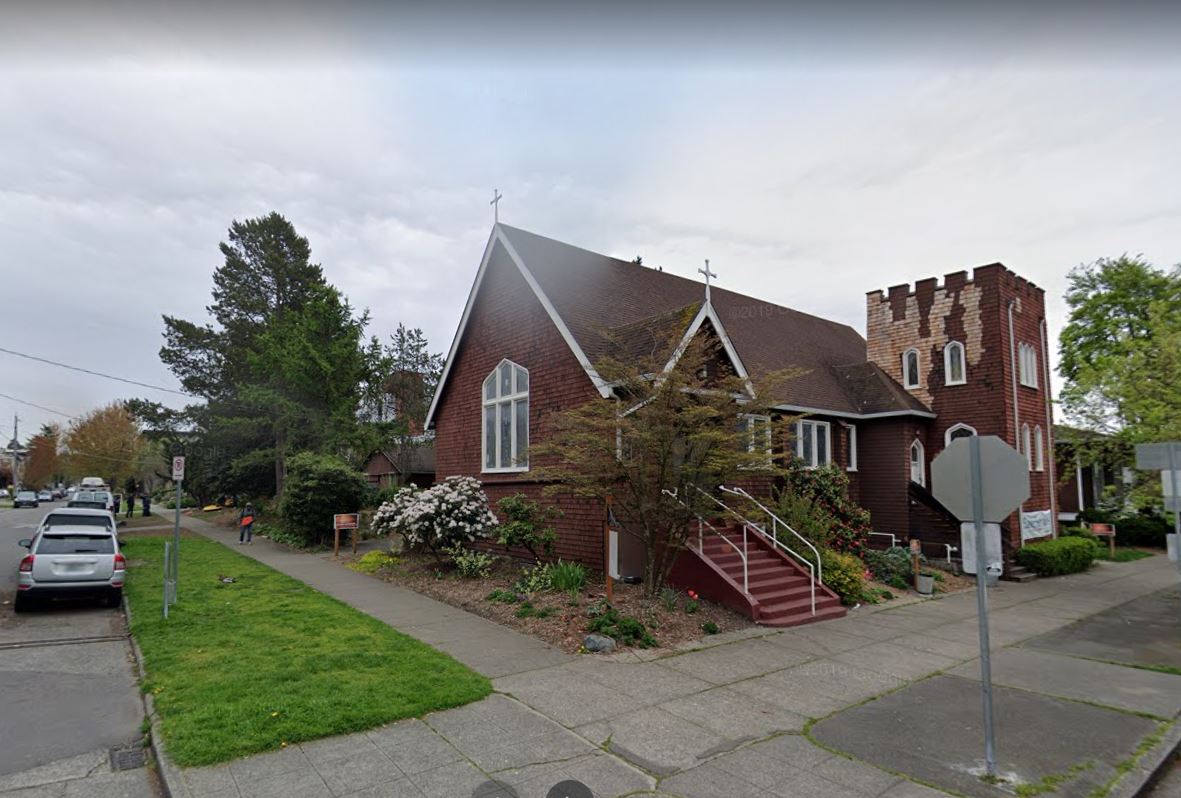
St. Luke’s Episcopal Church, Seattle, Washington
The Spread to other Episcopal Priests
Almost immediately after his arrival in Seattle, Bennett was invited to address a group of Episcopal priests, and shortly after his sharing, around twelve of them were baptized in the Spirit.
Friday Charismatic Services
St. Luke’s eventually became a revival center for the region, conducting services every Friday evening, with an average of 20 people per week being baptized in the Holy Spirit. Over the course of ten years it was estimated that 8,000-10,000 received the baptism in the Holy Spirit.
Other changes at St. Luke’s were:
► Attendance began to increase, eventually going to 5 services on Sunday mornings.
► Conversions were taking place.
► Ministry to those in poverty was happening.
► Miraculous healings were occurring, as well as miraculous supply of food and finances.
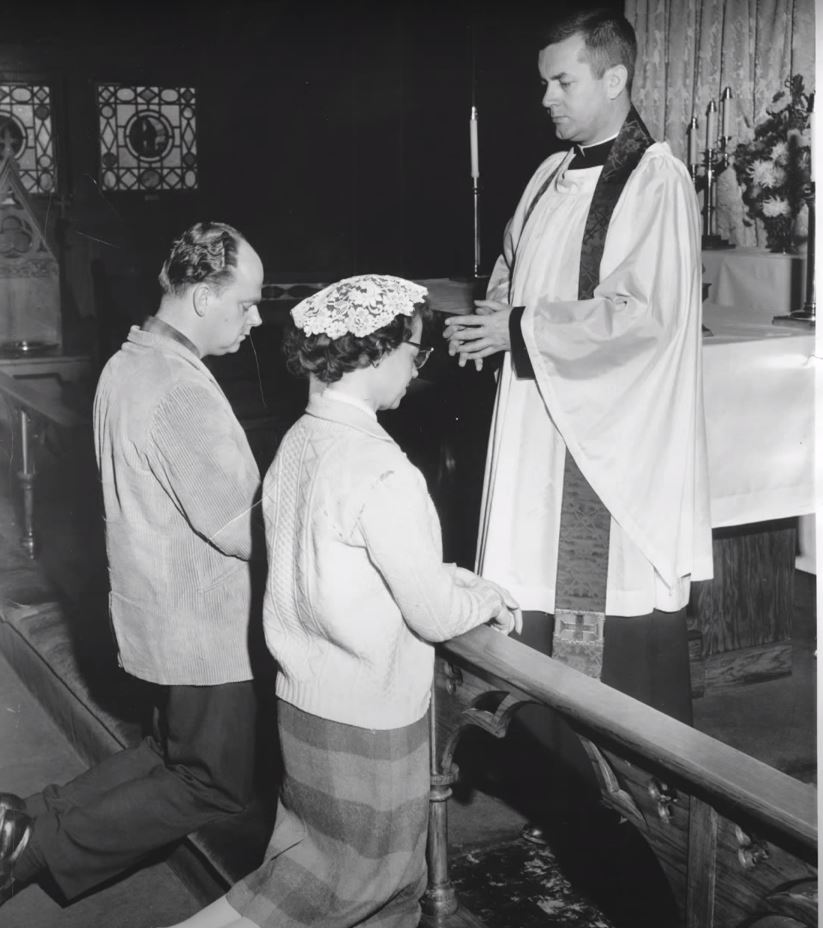
Episcopalian priest Dennis Bennett, praying for a couple
Ministers Unite
In October 1968, Bennett and two other leaders initiated a morning prayer meeting to pray for the churches of Seattle. This prayer group quickly grew and was eventually attended by as many as 50 Seattle pastors from Catholic, Episcopalian, Lutheran, Presbyterian, Methodist, Baptist, Nazarene, Disciples of Christ, Mission Covenant, Christian Reformed, classic Pentecostal, and Jesus People churches.
Bennett’s Pentecostal experience was the catalyst that caused the Charismatic explosion in the 1960s. By 1970, an estimated ten percent of the clergy and 1 million laypeople were Spirit-baptized.
National and International Ministry
In the fall of 1967 an associate pastor joined the staff at St. Luke’s and the church board granted Bennett permission to expand his ministry. He was then free to accept speaking engagements at churches and conferences throughout the nation and world. This ministry brought Bennett into the spotlight, and he became known as the patriarch of neo-Pentecostalism.
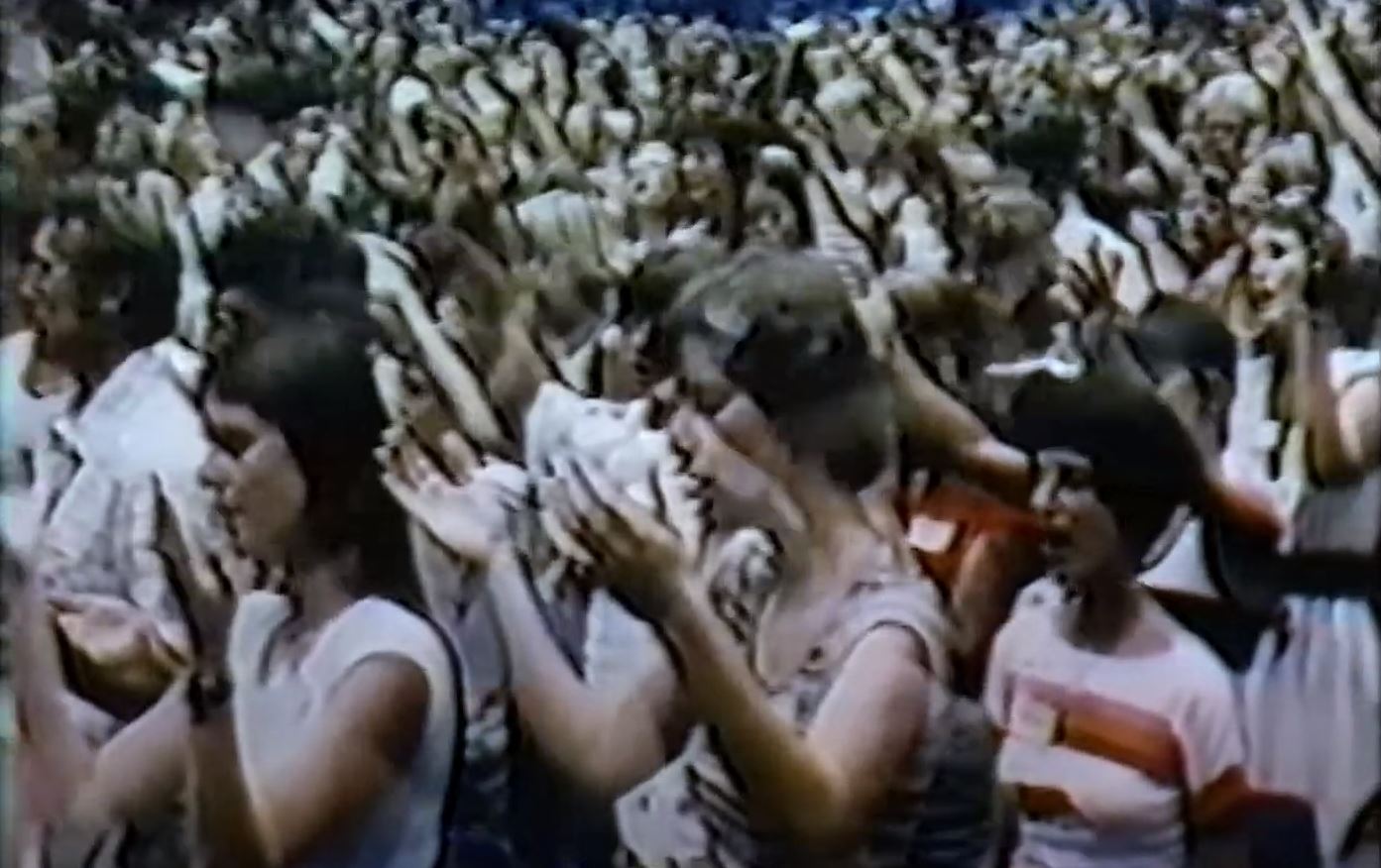
Charismatic Renewal Conference in Kansas City, Missouri
High Point of the Movement
A high point of the Charismatic Movement was July 20-24, 1977, when 50,000 believers assembled for the Charismatic Renewal Conference at the Kansas City, Missouri, Arrowhead Stadium.
Vinson Synan, historian, author, and leader in the Pentecostal movement, estimated that in 1977 there were 50 million Pentecostals and Charismatics worldwide. The number surpassed 200 million in 1987. In the year 2020, it was estimated that there were over 584 million.
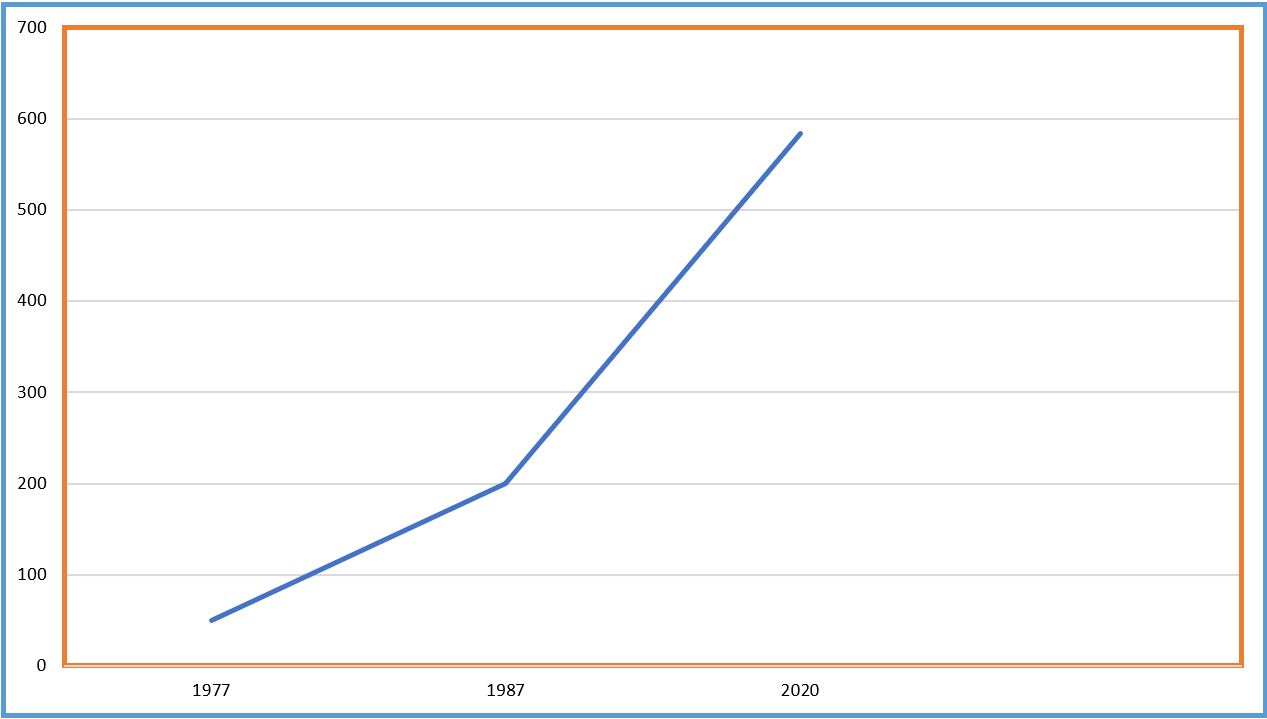
Number of Charismatics / Pentecostals in the world (in millions)
Fading Movement
Though the number of Pentecostals and Charismatics is growing worldwide, the Charismatic Movement among mainline denominations in the United States has faded. It rose to its peak in the late 1970s, then dispersed into other movements. Some of the people who experienced the baptism in the Holy Spirit left their traditional churches and joined Pentecostal or independent Charismatic ones, and the mainline denominations returned to tradition.
Primary Sources
► Nine O’Clock in the Morning by Dennis J. Bennett
► The Charismatic Century by Jack W. Hayford
► The Twentieth Century Pentecostal Explosion by Vinson Synan
Secondary Sources
► Catholic Charismatic Renewal by Wikipedia
► Charismatic Movement by Wikipedia
► Christian Movements and Denominations by Pew Research Center
► Dennis Bennett Dies: Charismatic Pastor by Eric Pryne
► Dennis Bennett (priest) by Wikipedia
► The Holy Spirit and You by Dennis & Rita Bennett
► The Holy Spirit and You, Supplement by Dennis & Rita Bennett
Video
► Charismatic Revival (1977) Kansas City by Archive.org
Return to List of Revival Stories
Chet & Phyllis Swearingen:
Office: (260) 920-8248
romans1015@outlook.com
Beautiful Feet
P.O. Box 915
Auburn, IN 46706

